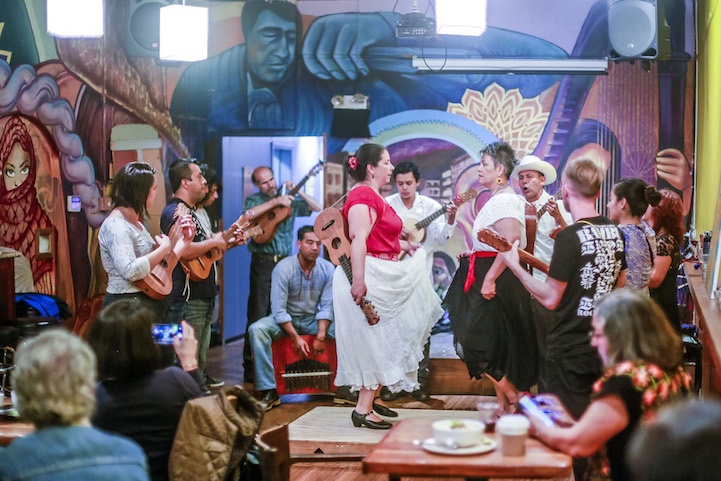Welcome to La Peña! Promoting social justice & intercultural understanding through the arts since 1975.

- This event has passed.
Fandango Jarocho & School Supply Drive
July 21, 2017 @ 8:00 pm - 11:00 pm
Enjoy a lively evening of music, dancing, and zapateado– bring your dance shoes and instruments, or just come and enjoy the music and dance!
There is no entrance fee, but any monetary donations are accepted in support of programming at La Peña.
Plus, we will be collecting school supplies for the children of farmworkers through the Food Empowerment Project’s School Supply Drive!
Below is a list of the school supplies that are needed. Please donate NEW school supplies.
• Backpacks (in great demand) no red or bright blue backpacks or those depicting violence or military [such as camo]; no promotional products
• Calculators
• Crayons
• Colored markers
• Erasers
• Lined notebook paper
• Pencils and pens
• Pencil boxes or zip bags that fit into 3-hole binders
• Pencil sharpeners
• Plain, blank, notebook paper with 3 holes to fit into binders
• Plastic binders
• Rulers
• Safety scissors
• Spiral notebooks (college and wide-rules)
If possible, please buy non-toxic supplies*.
So bring your NEW school supplies and come ready to jam!
Son Jarocho is a lively traditional art form from the southern Mexican state of Veracruz that sits on the coast of the Gulf of Mexico.
It is a lyrical and danceable music genre that formed in the melding of three cultures: Arabic-Spanish, African and indigenous Mexican. It is at the same time highly improvised and highly structured—filled with complex poly-rhythms and musical dialogue in its dance, song, poetry and music. The basic instrumentation of the son jarocho includes the jarana jarocha, guitarra de son (both guitar-like instruments) and zapateado (percussive footwork). Regional variations include the harp and various percussive instruments such as quijada, pandero, marimbol or cajón, with the latter two instruments being contemporary additions.
On a communal level, the son jarocho is used to celebrate various life occasions and often speaks of love (including courtship), happiness and the beauties of life as well as the hardships including sadness, loss and death. Hundreds of years old, the son jarocho is a living, contemporary art form that continues to evolve with time and under the influences of trans-cultural exchange and inter-generational dialogue.
